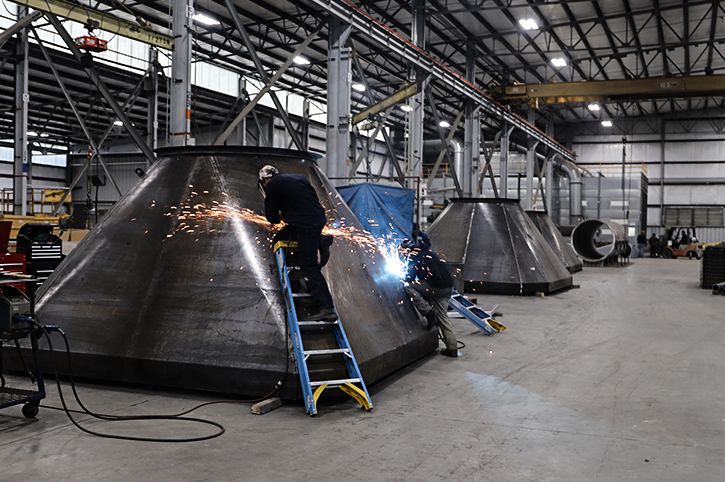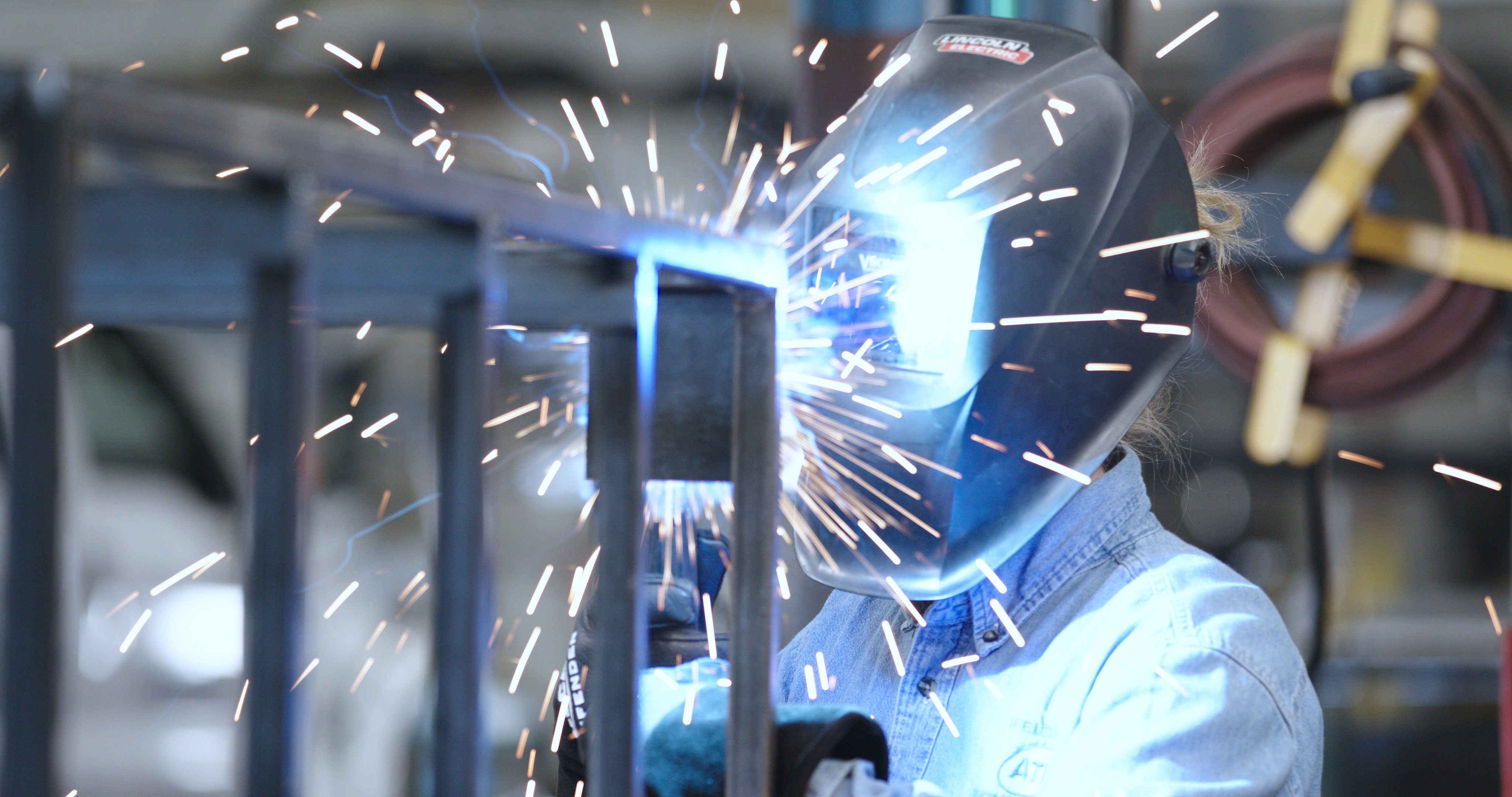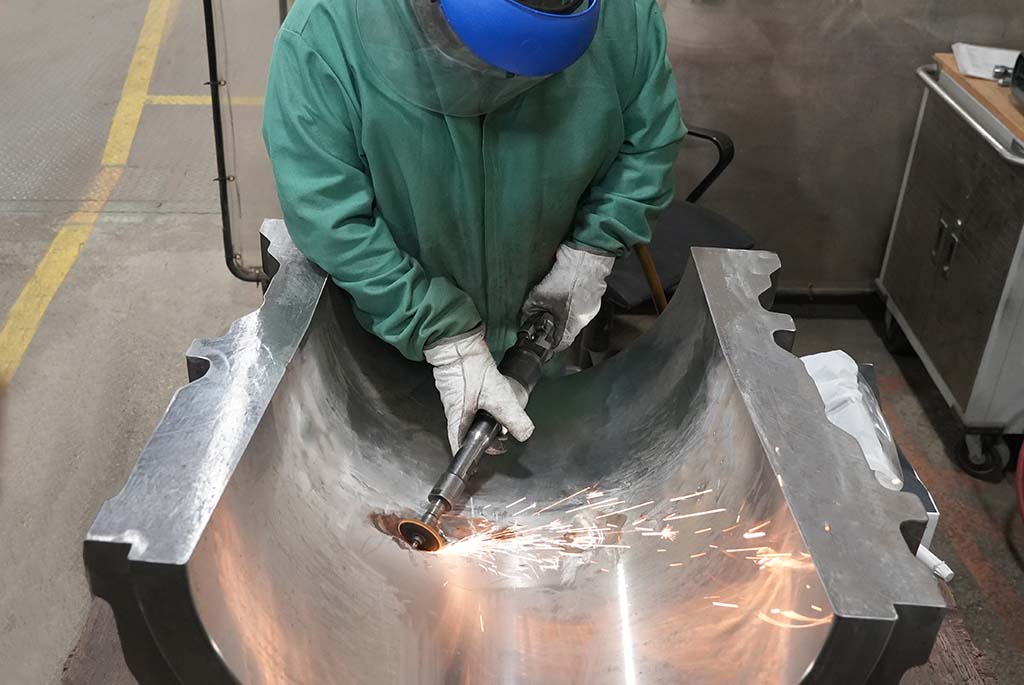Typical Welding Repair Issues and Just How to Address Them Effectively
Welding repairs commonly run into a series of concerns that can threaten the stability of the end product. Typical problems include insufficient penetration, porosity, and misalignment, to name a few. Each issue presents unique difficulties that require details techniques for resolution. Recognizing these issues is crucial for welders aiming to enhance their end results and skills. This discussion will certainly check out these usual welding repair work concerns and efficient methods to address them.
Inadequate Infiltration
Poor infiltration takes place when the weld steel fails to totally fuse with the base material, leading to weak joints and possible architectural failings. This issue frequently stems from insufficient warmth input, wrong electrode angle, or inappropriate welding rate. Welders might experience poor infiltration because of a miscalculation of the necessary parameters for a certain material density or kind. Furthermore, contamination on the base material's surface area can prevent effective bonding, intensifying the issue. To attend to insufficient infiltration, welders should assure proper setups on their equipment and keep a clean job surface area. Regular inspection of welds is recommended to identify any deficiencies early, enabling prompt corrections and the prevention of compromised architectural stability in welded assemblies.
Porosity
Porosity is a typical problem in welded joints that materializes as tiny gas bubbles caught within the weld steel. This flaw can compromise the stability of the weld, resulting in reduced strength and prospective failure under stress. Welding. Porosity typically arises from contamination, wetness, or inappropriate welding techniques, which permit gases to leave into the molten weld pool. To address porosity, welders must ensure appropriate surface area preparation, preserve a clean working environment, and use ideal welding specifications. Additionally, choosing the ideal filler material and shielding gas can alleviate gas entrapment. Normal evaluation and screening of welds can help recognize porosity early, ensuring timely restorative actions are taken, thereby maintaining the quality and reliability of the bonded structure
Misalignment
Misalignment in welding can emerge from various factors, consisting of improper setup and thermal development. Comprehending the origin triggers is necessary for efficient resolution. A number of modification methods are readily available to realign components and assure structural honesty.
Sources of Misalignment
Welding imbalance frequently stems from a selection of underlying concerns that can compromise structural stability. One main cause is incorrect fit-up of elements before welding, which can bring about spaces and uneven surfaces. Variations in thermal development during the welding procedure can likewise cause distortion, especially if the materials being signed up with have various coefficients of development. In addition, inadequate securing and fixturing may stop working to hold elements firmly in position, causing movement during welding. Poorly conserved equipment, consisting of welding devices and tools, may present incongruities in the weld bead, additional adding to misalignment. Driver mistake, stemming from insufficient training or experience, can likewise play a considerable role in producing misaligned welds.

Adjustment Techniques Available
Attending to imbalance effectively requires a combination of restorative techniques tailored to the certain concerns handy. One typical technique is using jigs or fixtures to hold parts in the appropriate setting throughout welding, guaranteeing regular alignment. Furthermore, pre-heating the products can help in reducing distortion and boost fit-up. For significant misalignment, mechanical realignment methods, such as making use of hydraulic jacks or clamps, can be used to correct the position before welding. Post-weld warm treatment might likewise be needed to relieve anxieties created by imbalance. Finally, cautious evaluation and change during the arrangement stage can protect against misalignment problems from ending up being considerable problems, advertising a smoother welding procedure and enhancing general architectural integrity.
Distortion
Distortion is an usual challenge in welding that can develop from different elements, consisting of irregular cooling and heating. Recognizing the sources of distortion is important for carrying out efficient avoidance methods. Addressing this problem not only improves structural integrity yet additionally enhances the overall top quality of the weld.
Reasons for Distortion
When subjected to the intense heat of welding, materials commonly undergo modifications that can result in distortion. This phenomenon largely emerges from thermal growth and contraction throughout the welding procedure. As the weld location warms up, the product increases; upon air conditioning, it acquires, which can develop interior stress and anxieties. Additionally, uneven home heating throughout a work surface can worsen these tensions, resulting in warping or bending. The sort of product additionally plays a significant role; metals with varying thermal conductivity and coefficients of expansion might react in different ways, resulting in uncertain distortions. Moreover, poor joint design and inadequate fixturing can contribute to misalignment throughout welding, enhancing the possibility of distortion. Recognizing these reasons is important for efficient welding repair and prevention approaches.
Prevention Techniques
Efficient prevention strategies for distortion during welding concentrate on regulating warm input and guaranteeing correct joint layout. Preserving a consistent warm input assists to reduce thermal development and contraction, which can lead to distortion. Utilizing strategies such as preheating the work surface can also decrease the temperature gradient, promoting consistent home heating. Furthermore, picking ideal joint layouts, such as T-joints or lap joints, can improve security and minimize anxiety concentrations. Carrying out proper fixturing to protect the workpieces in position additionally aids in maintaining alignment during the welding process. Staggered welding sequences can disperse warm more uniformly, preventing localized distortion. By using these approaches, welders can substantially decrease the chance of distortion and improve the total high quality of their welds.
Splitting
Breaking is an usual concern experienced in welding repair services, usually resulting from numerous elements such as incorrect air conditioning prices, product option, or insufficient joint preparation. The event of splits can greatly endanger the integrity of the weld, causing prospective failings throughout procedure. To resolve this problem, welders must initially evaluate the source, guaranteeing that materials are suitable and properly selected for the certain application. In addition, controlling the cooling price throughout the welding process is essential; fast air conditioning can induce stress and anxiety and bring about fracturing. Correct joint layout and prep work also add to lessening the danger. Implementing these methods can improve weld quality and durability, inevitably reducing the probability of fracturing in ended up weldments.

Insufficient Combination
A considerable issue in welding repair services is insufficient blend, which happens when the weld steel does not sufficiently bond with the base product or previous weld passes - Montana Mobile Welding and Repair Belgrade Welding. This problem can cause weak points in the joint, possibly jeopardizing the integrity of the welded framework. Elements adding browse around this web-site to incomplete blend consist of insufficient heat this website input, incorrect welding strategy, and contamination of the surfaces being joined. To address this issue successfully, welders must guarantee appropriate pre-weld cleaning and surface area prep work, as well as readjust their welding criteria to attain appropriate infiltration and fusion. Regular evaluation during the welding procedure can also help recognize insufficient blend early, permitting for prompt corrective measures to boost the general top quality of the weld
Overheating
While welding repairs can enhance architectural integrity, overheating provides a substantial obstacle that can result in material degradation. Too much heat during welding can alter the mechanical residential properties of steels, leading to lowered stamina, boosted brittleness, and bending. This phenomenon is specifically vital in high-stress applications where architectural integrity is vital. Identifying overheating can involve visual assessments for staining or distortion, as well as keeping an eye on temperature during the welding process. To minimize the dangers linked with getting too hot, welders ought to utilize proper techniques, such as managing heat input, changing travel rate, and using ideal filler products. Furthermore, executing pre- and post-weld warmth treatments can aid restore product residential or commercial properties and boost the total high quality of the repair service, making sure lasting efficiency and security.
Often Asked Inquiries
What Are the Usual Indicators of a Welding Defect?

Just How Can I Check My Welds for Quality?
To evaluate welds for top cswip 3.2 quality, one can utilize aesthetic examinations, ultrasonic screening, and radiographic methods. Each technique ensures structural honesty, determines defects, and verifies adherence to specified requirements, eventually enhancing the reliability of the welded joints.
What Security Preventative Measures Should I Take While Welding?
When welding, one ought to focus on security by putting on suitable individual safety devices, guaranteeing correct ventilation, protecting combustible products away, preserving a clean office, and understanding surroundings to stop injuries and accidents.
Can I Fix a Weld Without Remodeling the Entire Joint?
Fixing a weld without remodeling the entire joint is feasible, depending upon the damages (Montana Mobile Welding and Repair Welding). Methods such as grinding, including filler product, or utilizing a welding procedure can successfully deal with certain imperfections while preserving the surrounding structure
What Devices Are Important for Efficient Welding Services?
Vital tools for reliable welding repair work consist of a welding equipment, cord brush, grinder, safety equipment, clamps, and filler products. Each device plays a vital role in ensuring high quality and security throughout the fixing process. Porosity generally develops from contamination, wetness, or inappropriate welding techniques, which enable gases to escape right into the liquified weld pool. Inadequately kept tools, including welding machines and devices, might introduce disparities in the weld grain, further contributing to misalignment. When subjected to the extreme heat of welding, materials typically undergo adjustments that can lead to distortion. Splitting is an usual issue experienced in welding fixings, often resulting from numerous elements such as incorrect air conditioning rates, product selection, or insufficient joint preparation. A substantial problem in welding repair services is insufficient fusion, which occurs when the weld steel does not effectively bond with the base material or previous weld passes.